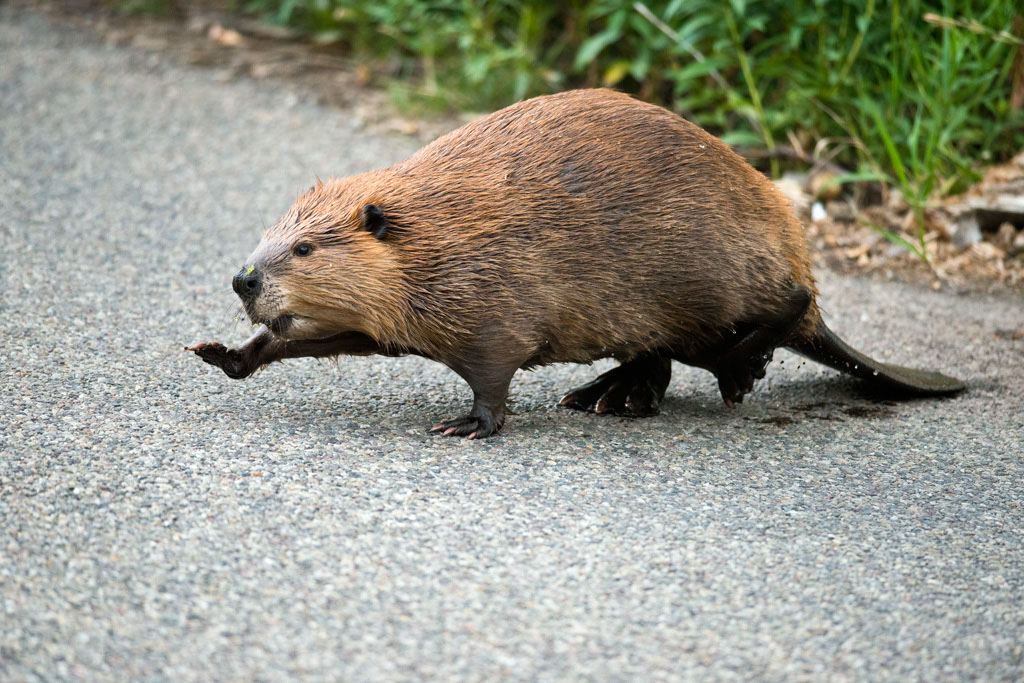
It’s almost time for the curling season to start, and I am very excited to get back on the ice!
In honor of curling, I wanted to talk about the national animal of Scotland, the country where curling originated. Unfortunately, Scotland’s national animal is the unicorn, and I couldn’t find any scientific papers about this magnificent creature.
So, instead, we’re going to talk about the national animal of another country where curling has a stronghold: Canada.
Canada’s national animal is the American beaver (Castor canadensis). These large rodents look very similar to Eurasian beavers (Castor fiber). Still, the two species don’t overlap geographically: American beavers live in North America, while Eurasian beavers live in Eurasia (I love it when names make sense!). North American beavers also have square nostrils instead of the triangle-shaped nostrils of Eurasian beavers. In addition, the two species have different numbers of chromosomes, so they cannot successfully mate together.
Since this post is to celebrate Canada’s national animal, the rest of today’s facts will be about the American beaver!
Large rodents
Beavers get BIG. Both American and Eurasian beavers are the largest rodents on their respective continents, and they are collectively the second-largest rodents in the world after the capybara. The average beaver grows to be between two and three feet (0.6 to 0.9 meters) long. This large body size comes with an impressive weight: an adult beaver can be around 60 pounds (27.2 kilograms), about the size of a 10-year-old child!

A defining characteristic of beaver bodies is their large, flat tails. These tails are broad and covered in blackish scales. While they might look a little weird, beaver tails have multiple uses. They provide support and balance when beavers are walking on land. Beavers slap their tails on the water’s surface to communicate with other individuals when in the water. These loud slaps indicate danger and may even startle predators away.
Beavers also have various adaptions for their semi-aquatic lifestyle, like folds of skin that can close their nostrils and ears and a transparent membrane that acts like goggles for their eyes. They even have lips that close behind their incisors! This lets beavers cut and carry branches underwater without getting water in their mouth and lungs.
Large teeth
Perhaps most apparent when you look at a beaver’s face is its large teeth. Beaver teeth are disproportionately large for their body size. They are typically at least 5 mm wide and 20 – 25 mm long, and these large teeth never stop growing throughout a beaver’s life.

Besides being large, beaver teeth are noticeable because they are bright orange! This coloration comes from iron, which has replaced calcium in their tooth enamel. Having thick layers of iron-filled enamel makes beaver incisors particularly strong, and they can cut through hardwood like maple and oak.
In addition to letting them collect wooden building materials, these strong teeth help beavers secure food. Beavers are one of the few animals that can eat tree bark and the soft tissue underneath it (called cambium). While most animals cannot digest the cellulose found in trees, beaver stomachs are full of microorganisms that aid cellulose digestion. Their favorite types of trees to chew on are willow, maple, and birch trees.
Dam building
Beavers collect wood to build dams in streams and rivers that slow water flow. The actual shape of the dam is determined by the speed of the water. The dam is straight in slow water, while in faster currents, the dam is built with a curve. This curve helps prevent the dam from being washed away.

One benefit of these dams is that they increase the depth of the surrounding water and help prevent it from freezing solid during the winter. This allows beavers to have caches of food at the bottom of their pond to feed on during the winter. This food is often things like logs, twigs, and other underwater vegetation surviving the winter temperatures.
Dams also play an essential role in protecting beaver homes, called lodges. Lodges are dome-shaped piles of branches covered in mud often found in the middle of a beaver-made lake. By constructing a dam, beavers can increase the water depth surrounding their lodge.
Beavers enter their lodges via underwater entrance tunnels that open into large above-water central chambers. Each beaver lodge is home to an adult pair of beavers, their juvenile babies (called kits), and the newest litter of kits.

Our beaver friends
Beavers are one of the only animals that actively change their environment. By building dams, they can change rivers and streams into ponds and wetlands, providing habitats for fish and waterfowl. Their dams also provide environmental services to humans, like helping stop flooding and containing oil spills.
Beavers also have large castor glands under their tails that produce castoreum. While beavers use castoreum to mark their territory, humans have found another use for it: flavoring. Castoreum is a brown slime with the consistency of molasses and the scent of vanilla. It’s also an FDA-approved natural vanilla flavoring! Don’t worry, though – you’re unlikely to eat beaver castoreum regularly, as it’s rare and challenging to collect.
One last beaver fact that will make you a hit a parties: beavers can’t burp, but they can fart! Here’s a video proving it:
Resources

Leave a Reply